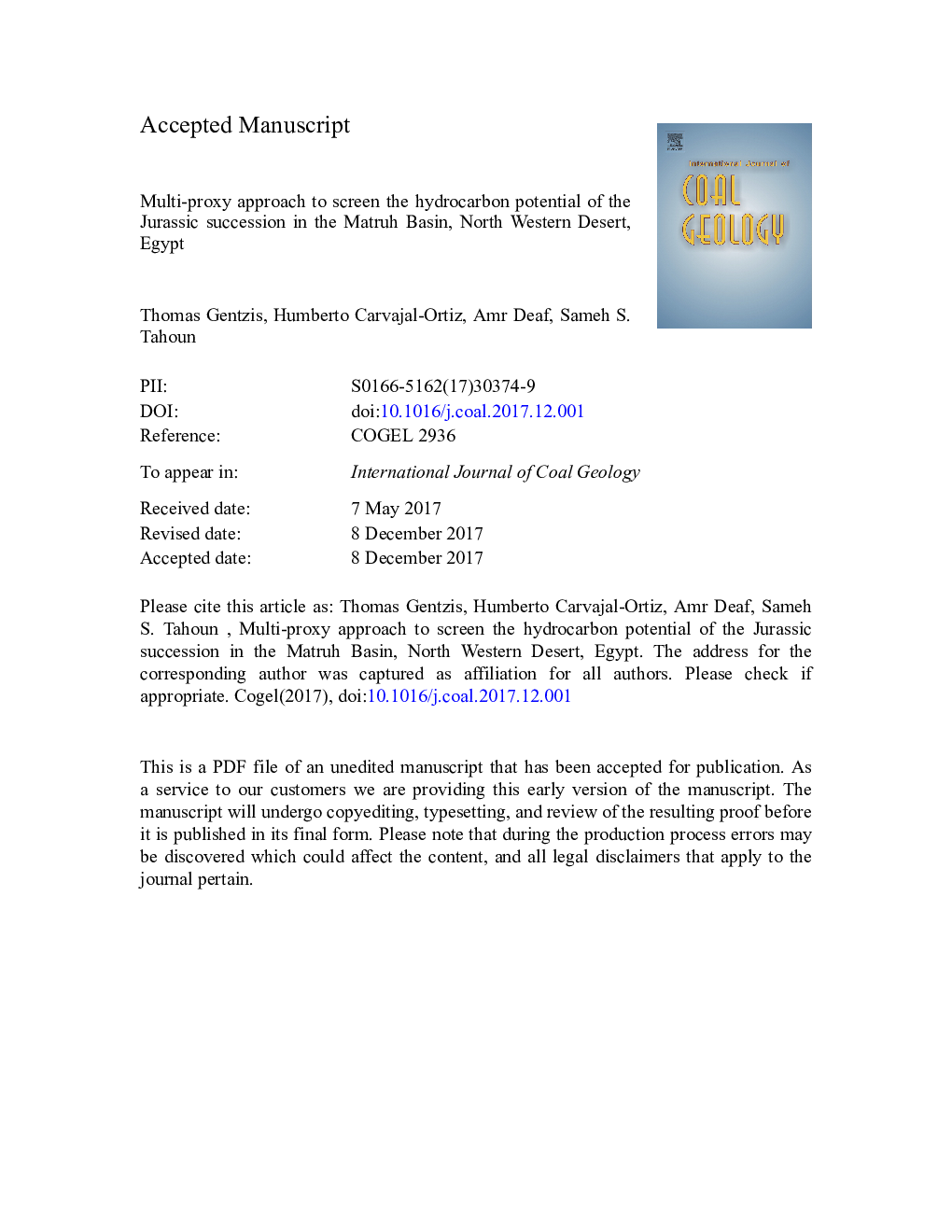| کد مقاله | کد نشریه | سال انتشار | مقاله انگلیسی | نسخه تمام متن |
|---|---|---|---|---|
| 8123429 | 1522513 | 2018 | 39 صفحه PDF | دانلود رایگان |
عنوان انگلیسی مقاله ISI
Multi-proxy approach to screen the hydrocarbon potential of the Jurassic succession in the Matruh Basin, North Western Desert, Egypt
دانلود مقاله + سفارش ترجمه
دانلود مقاله ISI انگلیسی
رایگان برای ایرانیان
کلمات کلیدی
موضوعات مرتبط
مهندسی و علوم پایه
علوم زمین و سیارات
زمین شناسی اقتصادی
پیش نمایش صفحه اول مقاله

چکیده انگلیسی
This paper discusses the hydrocarbon potential of the Jurassic succession in a mature basin in Egypt as an important element of a larger petroleum system study. Prior to any organic petrographic and organic geochemical analyses, a palynological age dating of the originally undifferentiated Jurassic sequence was carried out to identify different formations under investigation. This was based on key bioevents of some recovered dinoflagellate cysts and the identified lithology. Palynological, TOC/Rock Eval pyrolysis (including modified Rock-Eval methods), and vitrinite reflectance (VRo%) data from a total of 14 samples taken from the uppermost lower-upper Jurassic sequence represented by the Wadi Natrun (Toarcian-Aalenian), Khatatba (late Bathonian-Callovian), and Masajid (Oxfordian) formations in the Abu Tunis-1Â Ã well, are presented. In addition, two samples from the Abu Tunis-1Â Ã well and the proximal (~Â 32Â km to the east) Siqueifa-1Â Ã well, having the highest remaining hydrocarbon potential (S2 yields), were analyzed and their results were compared using modified pyrolysis programs. Although the data showed a good correlation between the TAI of the palynomorph assemblage, vitrinite reflectance, and Tmax from Rock-Eval pyrolysis in the shallower intervals, the correlation between VRo and Tmax was poor in the lower half of the studied succession (middle Khatatba and Wadi Natrun formations). The very low Tmax values indicate immature OM while VRo and TAI indicated middle stage of oil window to past peak oil generation. The reason for this discrepancy is that the deeper samples are reservoir rocks, not source rocks, and the majority of the organic matter is not composed of reactive kerogen but consists of migrated hydrocarbons and NSO compounds. Contamination due to oil-based mud (OBM) was eliminated because the Abu Tunis-1Â Ã well was drilled in 1969, prior to the extensive use of OBM in drilling. This study showed that a multi-proxy approach is the best way to screen the hydrocarbon potential in a thick succession that contains interbedded source and reservoir rocks.
ناشر
Database: Elsevier - ScienceDirect (ساینس دایرکت)
Journal: International Journal of Coal Geology - Volume 190, 1 April 2018, Pages 29-41
Journal: International Journal of Coal Geology - Volume 190, 1 April 2018, Pages 29-41
نویسندگان
Thomas Gentzis, Humberto Carvajal-Ortiz, Amr Deaf, Sameh S. Tahoun,